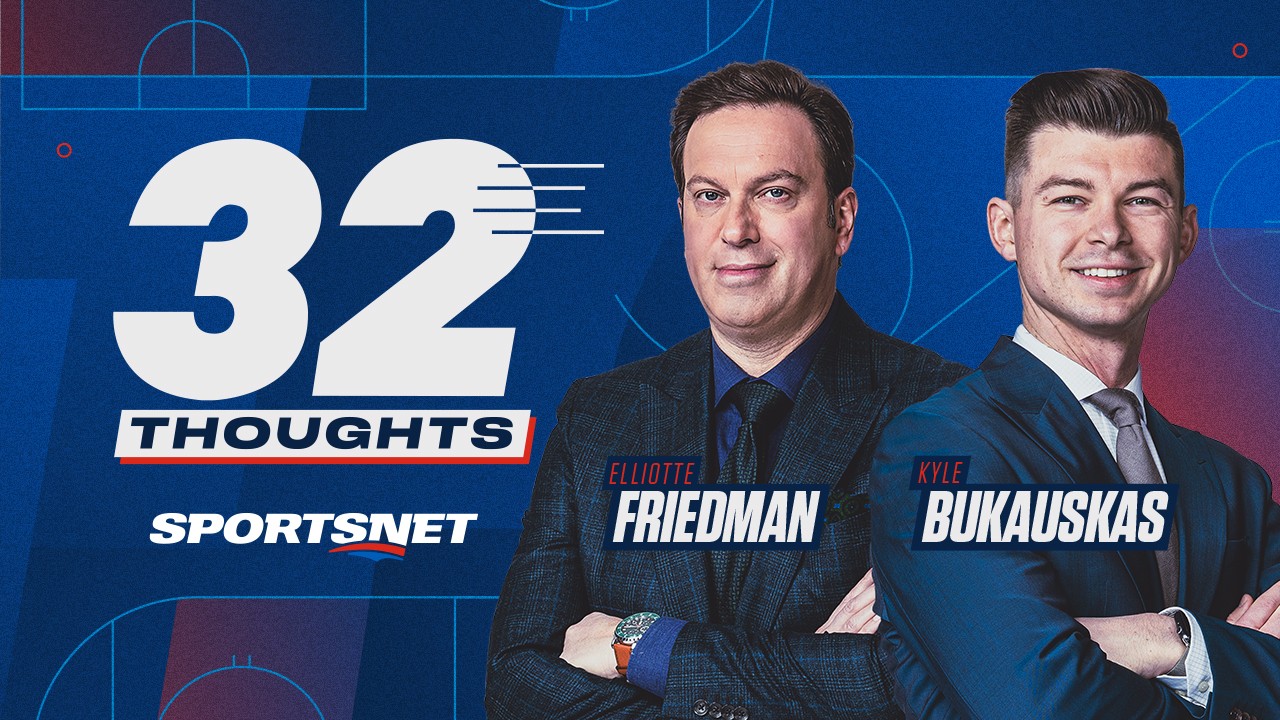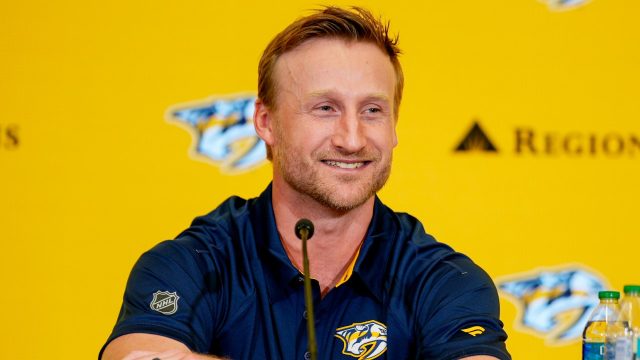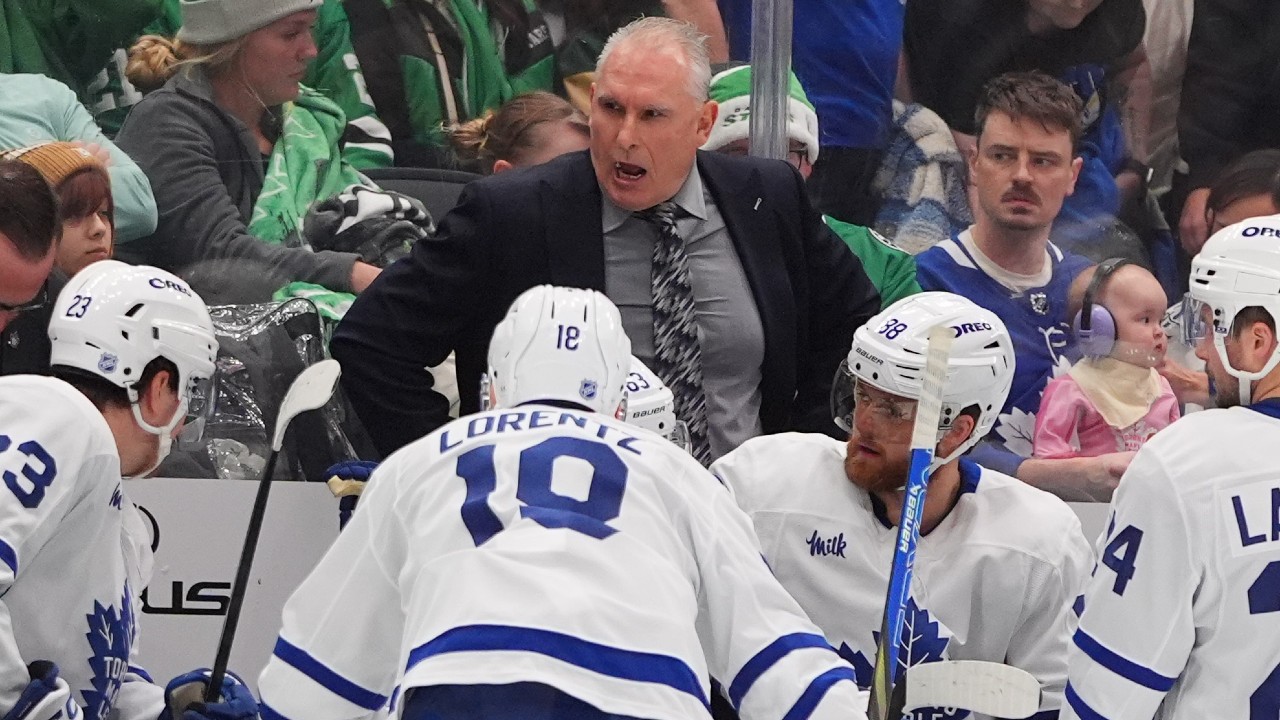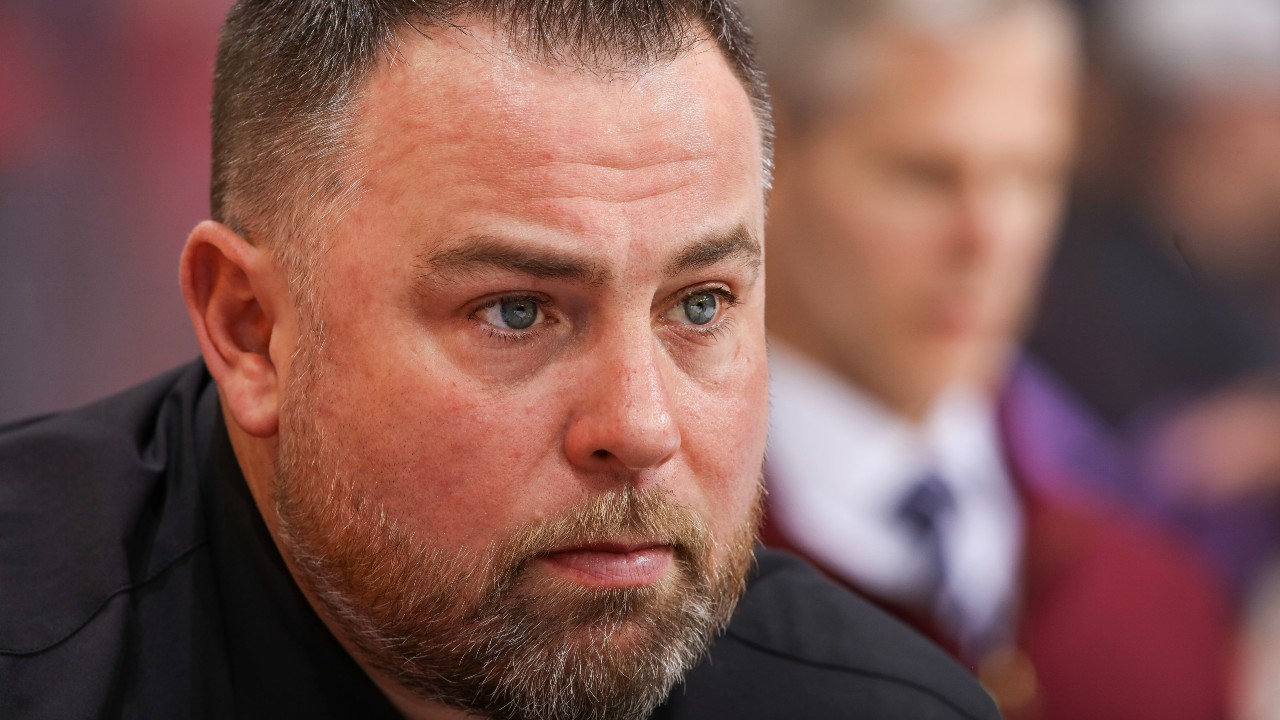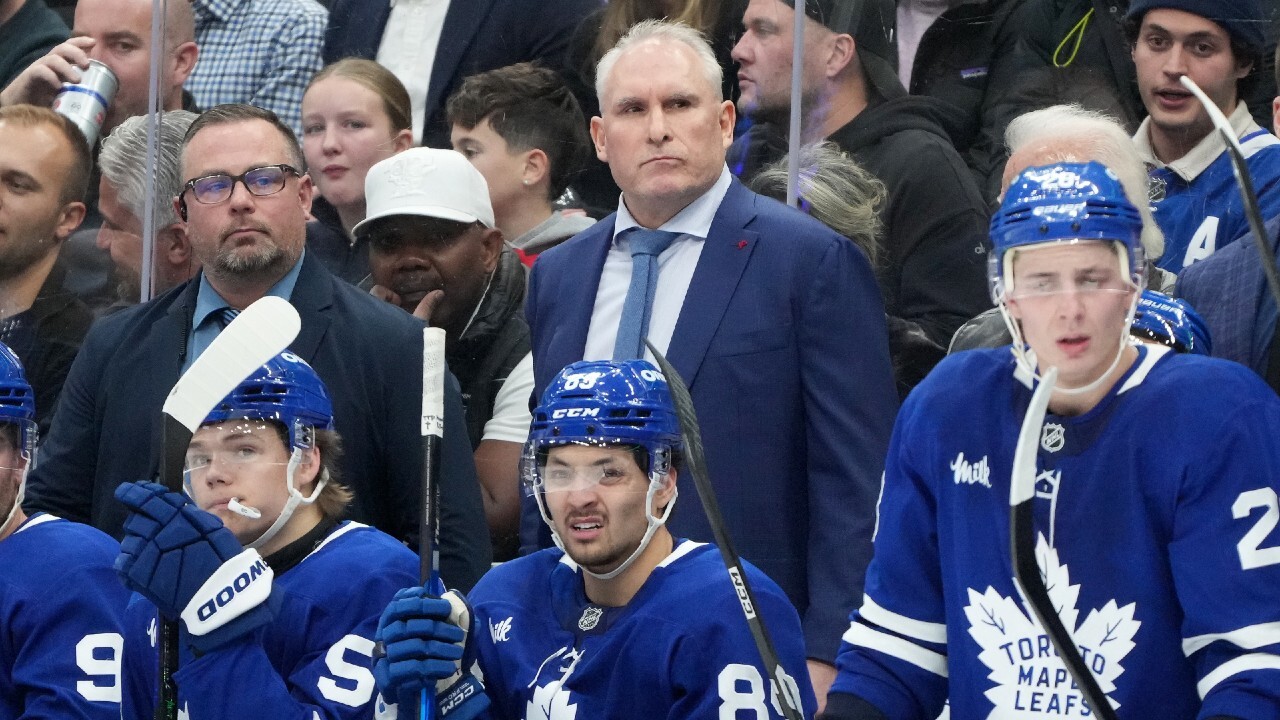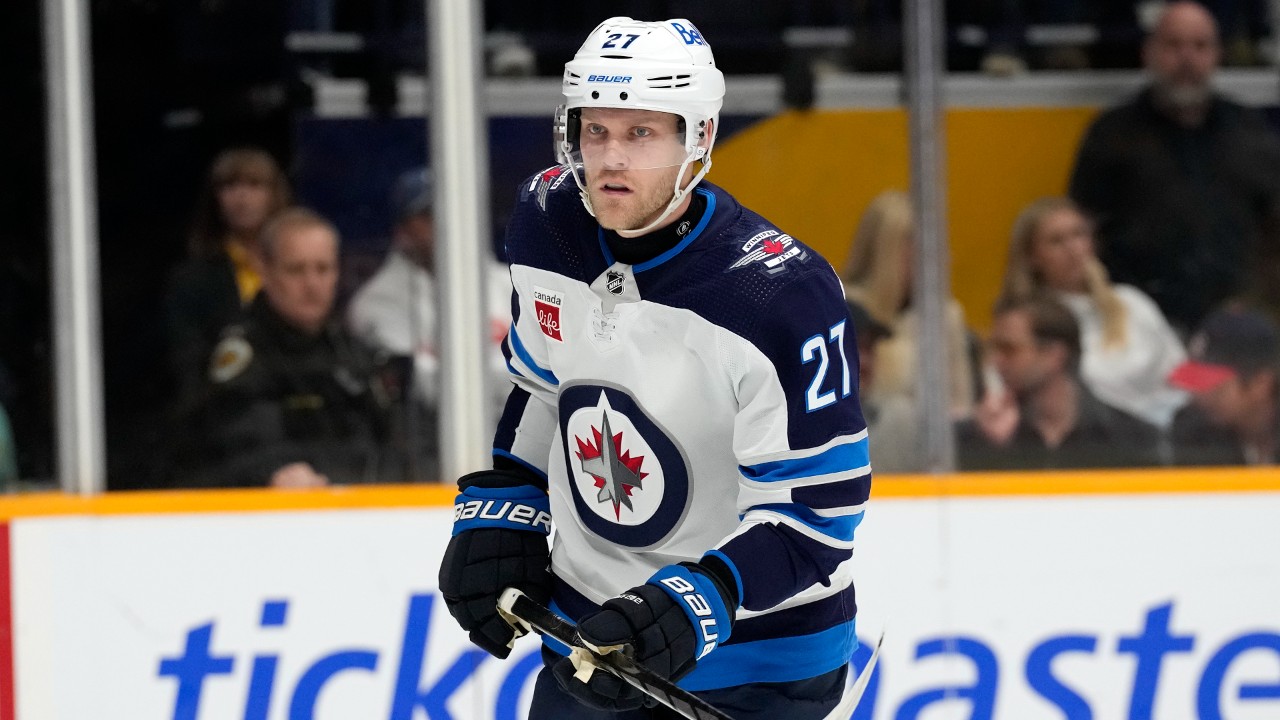
Already this week we’ve explored one player who needs to deliver this season for each team in the Central Divison, and have also taken a crack at predicting how the standings would play out. Today we look a little closer and explore a question facing each of the teams in this tightly packed division.
With training camps opening midway through next week, we’ll start getting answers to some of these questions, while others will take some time to play out. In one of the NHL’s more interesting groupings, here’s what we’re wondering about the Central.
Colorado Avalanche: How will Gabriel Landeskog and Valeri Nichushkin factor into this season?
Suspended until November, we know Nichushkin won’t start the season with the Avs. Captain Landeskog hasn’t played at all since the 2022 Stanley Cup win because of a knee injury, but there’s finally optimism he’ll be back. When last season ended Landeskog said he was aiming to come back in 2024 and just last month Colorado coach Jared Bednar said there was hope he’d be back “sometime near the start of the season.”
So while neither will be in the lineup for Game 1 in October, both figure to have a major impact on the team’s fortunes for one reason or another this season. When Landeskog returns, how much of his former self will he be? When Nichushkin is eligible to return from suspension, will the Avs welcome him back? There was some question if they’d look to terminate his contract, something the team downplayed though acknowledged that trust needed to be rebuilt with the player. With 28 goals in 54 games last season, and then another nine in eight playoff games, the 29-year-old is a very important piece of this lineup.
Chicago Blackhawks: Who will play with Connor Bedard and how high can the super sophomore’s point totals go?
Last season’s Calder Trophy winner delivered as much as could have been expected as a rookie, scoring 22 goals and 61 points in 68 games on a roster that lacked any support at all. Now in Year 2, with a slightly upgraded roster, we wonder where Bedard goes from here.
While Taylor Hall was to be his linemate last season, and was before a season-ending injury, others will push to play alongside him in 2024-25. Along with Hall, UFA signings Tyler Bertuzzi and Teuvo Teravainen will vie for playing time next to the franchise player. Whoever gets those spots out of camp, will they hold them all season? And how much will improved linemates help Bedard produce?
While it’s not exactly fair to compare Bedard to Connor McDavid, there will be high expectations for 2023’s first overall pick. He was nearly a point-per-game player in Year 1, in which he played 68 games because of a mid-year injury. McDavid reached 100 points as a sophomore — can Bedard get to 90 if healthy?
Dallas Stars: Will the blue line be deep and good enough to hang with the West’s best?
The Stars have made back-to-back Western Conference finals and have a lot of strengths on the roster. But when we look at the defence, we’re left with some questions.
Past Miro Heiskanen and Thomas Harley (still unsigned, by the way), it quickly starts to thin out. Veterans Ilya Lyubushkin, Matt Dumba and Brendan Smith have all been journeymen for the past few years, and each were minus players in 2023-24. Nils Lundkvist is there for depth but hardly got any playing time in the playoffs. If Lian Bichsel makes the team out of camp and contributes right away it would certainly go a long way here, but it’s a lot to ask a 20-year-old defenceman to be something of an X-Factor in his first season in North America.
The Stars traded for Chris Tanev last season for a reason — they needed his steady defensive hand. He was of course a great fit and a key player, but he wasn’t directly replaced. That loss will be felt. The Stars still have the makings of a Stanley Cup contender, but their defensive depth was challenged against the best team in the playoffs last season. Entering 2024-25 the blue line may be even more susceptible against the highest tier of teams in the league.
Minnesota Wild: Can Marco Rossi take another step and lock in as a long-term part of the core?
The Wild are still going through punishing cap penalties, being charged $14.743 million this season for the bought out Ryan Suter and Zach Parise contracts. But if you squint, you can see a potentially bright and prosperous future coming.
Starting next season, that penalty decreases to only $1.66 million for three more years, far more manageable especially with the cap anticipated to rise to $92 million, and beyond.
Also, consider that the Wild have already begun to lock in a young core for the long term. Matt Boldy is locked in at a $7 million cap hit through 2030; Joel Eriksson Ek at $5.25 million through 2029; and Calder finalist Brock Faber is in for $8.5 million through 2033. Older players Jonas Brodin ($6 million), Jacob Middleton ($2.45 million), Yakov Trenin ($3.5 million), Frederick Gaudreau ($2.1 million) and Marcus Foligno ($4 million) are all also locked in through at least another four years.
As the cap rises, those deals will become more and more of a bargain, especially the first grouping of young players who will be at the centre of it all. Now Marco Rossi, a 22-year-old centre and ninth overall pick in 2020 who blossomed with 21 goals and 40 points in his rookie season, is entering his contract year. While trade rumours did follow him into the summer, a new opportunity could present itself this season. What if Rossi earns, and sticks on as, the top-line centre job between Kirill Kaprizov and Mats Zuccarello? His production would surely spike and leave the Wild considering his place in the plan. If Rossi becomes that elusive No. 1 centre and also signs long-term at a reasonable rate, the Wild’s hand may only get stronger.
Kaprizov’s own complicated extension will come up soon enough, with an expiring contract in 2026. And if Rossi signs long-term, it complicates centre Danila Yurov’s path to the team. But those are problems for another day. For this season, we’re curious to see what Rossi can do and if he locks himself into this core over the long haul.
Nashville Predators: How much more offence will head coach Andrew Brunette squeeze out of this team?
In his first year behind the bench in Nashville, Andrew Brunette’s team finished with a top 10 offence. Averaging 3.24 goals per game, it was a jump of over half a goal from 2022-23 when the Preds were 28th in NHL scoring. It’s the style Brunette wants to play and was successful finding first with the Panthers. When Brunette took over behind Florida’s bench for 75 games in 2021-22, they were a chaotic bunch in a good way, scoring over four goals per game and finishing as one of the best play-from-behind comeback teams in the history of the league.
In Year 2 with Nashville, Brunette has some new weapons. Up front he gets two 40-goal men in Steven Stamkos and Jonathan Marchessault, who will also have chips on their shoulders after being discarded by former teams they wanted to stay with. The Predators finished with the 17th-most goals at 5-on-5 last season, and Marchessault had the seventh-most even-strength goals of any NHL forward. New defenceman Brady Skjei had 31 points at even strength last season and was one of Carolina’s best offensive contributors from the blue line.
If there’s a specific area on offence the Predators could improve, it’s on the power play. They ranked 16th in the league with a 21.6 per cent success rate in the regular season, then converted on just two of their 22 playoff opportunities. Stamkos ranked near the top of the league — third overall — in power-play goals with 19 last season (granted he did it next to Nikita Kucherov).
St. Louis Blues: Can Jordan Binnington secure his hold on Canada’s goaltending job and elevate the Blues in the process?
For a few years Jordan Binnington’s numbers were taking a hit, with save percentages going from .912 to .910 to .901 and .894 over a four-year run. It wasn’t looking as certain that he’d be a lock to play in a Team Canada crease for any best-on-best event — though with how thin the depth chart was, he was never far from the conversation (and because his NHL GM also runs the Canadian men’s Olympic operation).
But last season was a bounce back for Binnington, a .913 save percentage, 2.84 GAA and finishing as a top-five goalie in the league in Goals Saved Above Expected. He wasn’t in the Vezina conversation and the Blues didn’t make the playoffs, but Binnington was trending up again at 30 years of age.
As far as Team Canada’s crease goes, first up is the 4 Nations next February and Binnington has competition. Stuart Skinner is coming on and just reached the Stanley Cup Final, while Adin Hill won the Cup in 2023. Connor Ingram is something of a dark horse in the discussion.
With that also to play for this season, will Binnington equal or improve on last season’s performance to lock up the No. 1 job for Canada? And if he shows that well, will he elevate the Blues into a playoff spot, perhaps even making them a tough out once there?
Utah Hockey Club: How will they introduce themselves to a new market?
Earlier this week we highlighted the fact that Utah has completely rebuilt and improved their blue line. It’s the same management team headed by Bill Armstrong, but under new ownership this organization’s entire approach has shifted to a new gear. On paper, the team is improved and the future is now certain. Becoming more of a buyer now, Utah is in a position to upgrade itself into a more competitive place.
So how will this get started on the ice? How will the new arrivals impact the roster, but also, how will the relocated players settle in their new surroundings? How will the fan base be not only in ticket sales but also with their character at the arena? How will the team’s in-game presentation go and is anything unique going to be offered? Can the franchise introduce a team that can contend for a playoff spot and provide interesting hockey at least into April right away, or will it still end up being a slog through the middle part of the season?
Winnipeg Jets: How will Nikolaj Ehlers’ future play out?
One of the most steady players on the team for nearly a decade, Ehlers is coming to a critical juncture in his career. Turning 29 in February, he’s set to become a UFA next summer and is certain to get a raise on his current $6 million AAV. Will that fit with the Jets? Ehlers’ ice time is an every-year talking point as he’s usually in the 15-16:30 per game range, but regularly at or near the top of the team in points per 60 minutes played.
After losing some veteran players in the summer and not finding replacements, it’s a wonder how much of a contender the Jets really are, or if they’re a step or two below that. If faced with the prospect of losing Ehlers as well next summer, what could they get for him on the trade market as a rental? Would they look at him as an own-rental for their own playoff push? Or will this contract get resolved before then and keep him in place?
The Jets have an even bigger contract to figure out next season when Kyle Connor will walk into his free agent season. After re-signing both Mark Scheifele and Connor Hellebuyck last year, GM Kevin Cheveldayoff still has some important work to do.


